During my stay in New York, I was invited to photograph the New York City Fashion Week for a couple of years in a row, which was a complex and exciting experience. Following this photographic adventure, I decided to share some tips and give you some suggestions on how to succeed and survive these kinds of events. Done well, fashion photography can deliver some of the loveliest, most arresting images possible within the medium. This is our Fashion Week Tutorial.
Fashion Week Tutorial:
The New York City Fashion Week is a huge fashion show presentation event which takes place twice a year in New York. It comprises of catwalks (runways), presentations, backstage insights and different kinds of shows and parties. To be assigned to cover such an event can mean different things and it’s important to agree on a shooting list and goals beforehand with your editor.
While some photographers are expected to cover the clothes and other products presented, others are asked to create a story around the event or to show it from an unseen angle and new perspective.
Most of them are encouraged to pay special attention to celebrities attending the shows: actresses, singers, designers and other interesting characters.
EVENT ACCESS:
The fashion weeks are private events closed to the public and in order to attend them and take photographs you’ll need some of the following:
- Press accreditation (Weekly): the editor must register the press team in order to give the photographer access to main lobby.
!!! You still need tickets to get inside the shows, but you can queue to get stand-by seats for shows that are not fully booked.
- Pass (Weekly): You’ll hold a badge all the time that will get you inside every show. The price in the last edition was about £100.
!!! For spin-off events hosted outside of the official venue, you must contact the PRs directly, as these are not part of your weekly pass.
!!! You need special credentials to stay in the first row or to stay in front of the runway
- Invitation by PR (for each show): The editor contacts the PR team of the fashion designers, and gets a ticket with your name and your role. The invitation is free.
- If it’s a catwalk: you do not have an official photographer place reserved for you in front of the runway. You’ll be standing among the public on the side of it. You must be sitting.
- If it’s a press presentation: you’ll not have early access like other official photographers. You’ll enter later with the crowd of journalists and bloggers. !!! It will be much more difficult to get clean tidy shots of clothes and models.
- Backstage Access (for each show): in order to have access to backstage, your editor must contact the PR of the selected designer and register the photographer for a special access to the backstage. Access is not always granted because the backstage is much more private than the shows; it is a living studio where models, makeup artists and designers are working under pressure for the preparation of the show.
(Please verify this information as there are changes every year)
LOCATIONS:
In New York City, the official venue is the Lincoln Center, but many spin-off shows are flourishing all around the city during the Fashion Week.
There are different kinds of fashion shows:
- Studio (The Box, The Studio, etc.): The models will be all standing for about 45 minutes in the same position. The photographer can talk to them and direct them slightly to make the photos he/she wishes.
- Cat walk: These fashion shows will be held in different locations, from theaters, to empty Piers on the Hudson River. They last usually 15 minutes. The runway can be very long, very distant, and can be higher or much lower than your seat. The best places to observe them are usually reserved by big press or taken by people with equipment shooting video.
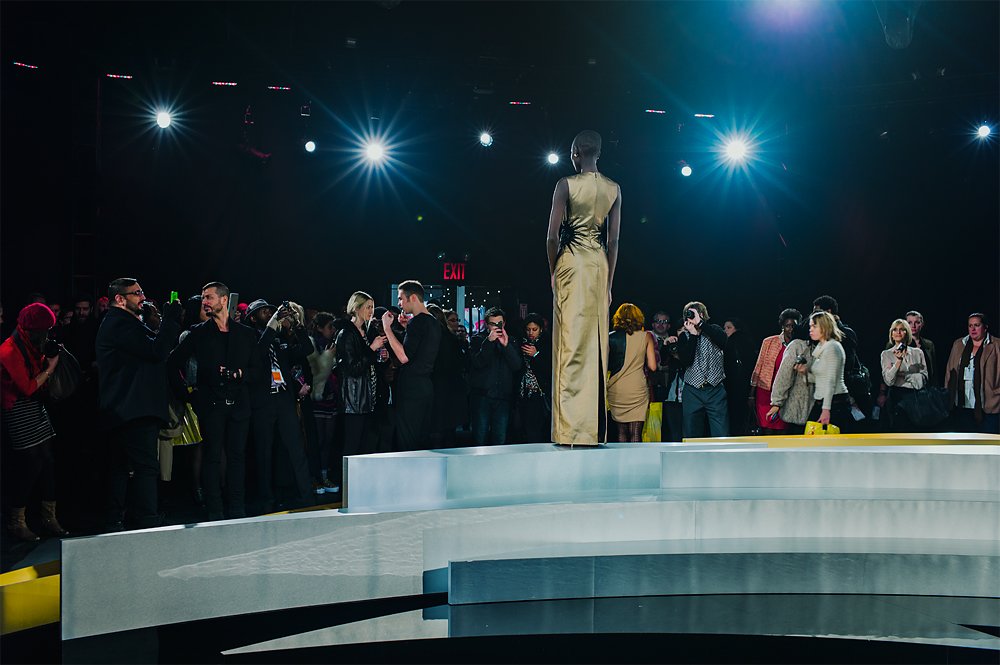
12th Febraury 2012, New York Fashion Week. The Box, End of Mathieu Mirano show. Only one model is standing on the stage and the designer is being interview. Photo by Giulia Bianchi
SHOOTING LIST:
It’s important that you agree with your editor what is the subject and goal of your photos. Is it a fashion article? Is it more an editorial cut?
If you already have a style and a strong personality, why don’t you pitch your own idea and vision to the magazine?
I remember when the famous conflict photographer, Paolo Pellegrin, was hired by Kathy Ryan, Director of Photography of the New York Times, to take photos of celebrities during The Oscars Night. Ryan wanted a different look at the usual glamorous event, so she hired somebody that could convey more criticism and drama.
When I was hired we agreed on a shooting list. I’m going to share it with you as most magazines will be very similar.
- Environmental Shots: you are required to produce beautiful pictures to show how the location looks. Take photos of the exterior, the Entrance, the Lobby, the studio or catwalk. Use a wide angle and try to include the crowd and the models as well. Environments with natural light are more beautiful in early morning and late afternoon.
If the location is lit only by artificial light to create a moody scene for the show, do not use flash: you don’t want to lose the cinematic aspects of it.
- The Fashion Designer: make always sure you get a portrait of the most important people in the room. In this case Designers and famous models are the priority. If you are asked to do more reportage style, you can wait for the Designer to show the collection and take photos of they touching the clothes.
- The collection: Unless differently agreed with the magazine, during the Fashion Week, the most important thing to show your editor is the clothes.
Take photos of different outfits, including details of them. If you are allowed to be close to the models and you can direct them, use flash light to bring out the details of the texture, neutralize the white in order to present real colors in your photos. - Celebrities: Every magazine is interested in the celebrities that are attending
the shows. Being super nice and fast, try to make a portrait of them or catch them in an interesting light and situation. - Other: While you are taking photographs of the Fashion Shows you are exposed to an entire universe. Once you’ve captured what is strictly necessary for your editor, you can always take more photos that are interesting to you.
One year I decided to point my camera towards the aberrations of the “fake” glamour of Fashion Week: heavy plastic surgeries, ridiculous outfits, anorexic models and people that seemed lost and out of place there. Another year I took photos of the invisibles of the Fashion Week: guardians, cleaning ladies, attendants. According to your personality, you can peel the layers of such an event, showing a particular angle of it.
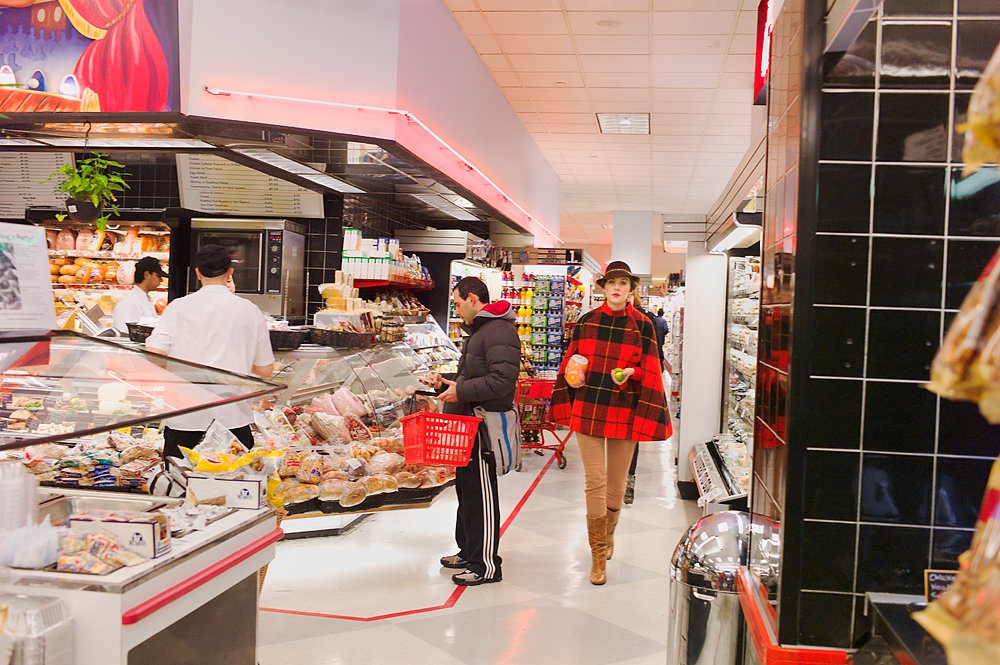
11th February 2012, New York Fashion Week. A model is doing shopping in the supermarket close to the Lincoln Center. Photo by Giulia Bianchi
FASHION WEEK SURVIVAL TIPS:
- Arrive Early: Every time you are covering an assignment, it is mandatory and necessary you arrive early, this is vital in and work, not just a Fashion Week Tutorial. For two reasons: First, you can’t afford to be late at the event you must capture with your camera. Second, there are always photos you can make before and after an event that are extremely interesting.
- Managing Security People: As a photographer, you want to be as pleasurable as you can with everybody you meet. The security people can throw you out of a venue for almost no reason if you’re not extremely nice to them, but at the same time you cannot follow everything they’re going to ask you to do and to not do, otherwise you’ll not be able to do a successful coverage of the event. They impose just too many restrictions on our job. Be nice, say yes to everything they say, but don’t act immediately. If they ask you to move, or to leave or to be seated, while you are taking photos say yes, but let them repeat their alerts 3 times before you actually do what they asked you. Be very polite, and go far away from the one that caught you but keep doing what you need to make the best photos you can think of. Justifications like “the security didn’t allow me” will be completely useless with your editors, and will not make you a better photographer in the long run.
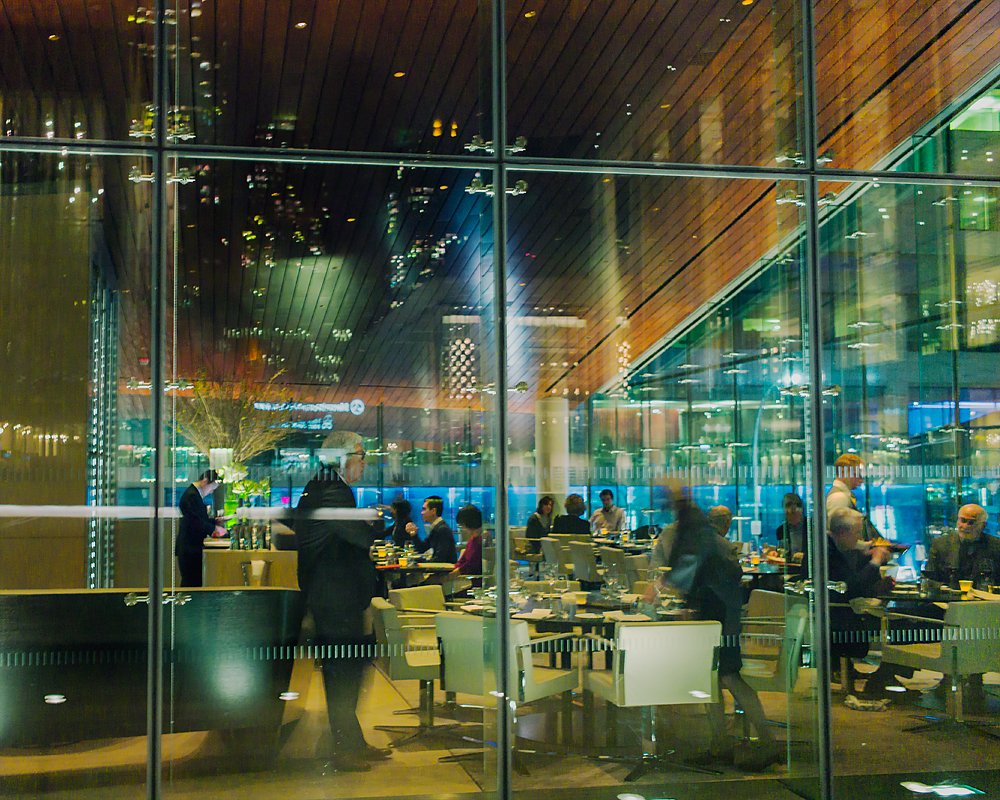
11th February 2012, New York Fashion Week. Restaurant in front of the fashion week. We can see the entrance of the show reflected in the glass. Photo by Giulia Bianchi
FLASH AND LIGHTING:
Most stock-photography photographers will go around with big cameras and a flash on a bracket. Some of them will use a diffusor to make their flash light softer. This is not the way I worked. Most lights at the fashion week are interesting, dramatic spot-lights created to highlight models and other points of interest. Do not kill such an interesting atmosphere.
- Use the flash for some portraits (bouncing it on the ceiling) and for clothes, accessories and textiles details.
- Use the flash in the backstage, but do it creatively.
- Don’t use flash for environmental photos or for runway close-ups.
- Pump up your ISO to 1600.
- Bring a reflector with you instead.
LENSES:
Bring a variety of lenses.
- You’ll need a wide angle, a 35mm for environmental and reportage photos.
- You’ll need a tele lens for cat walks. Frame the model and her dress using the background at your advantage. Don’t create a messy photograph, instead move yourself and go sit somewhere else. Find a good geometrical perspective that will enhance the subject. Do not try to use the flash on the runway, it is too far. The show can be very dark but on the other side they are usually organized with spot lights: The model will be at least 4 stops brighter than the surroundings.
BACKSTAGE:
Backstage can be extremely messy and lighting can be very yellowish and dull. This is the moment to use what you learned at the speedlight course for photojournalists that you hated so much. It will save your life.
- Do not use the flash in camera, shooting at 1/125.
- Use the flash OFF Camera, best with a chord pointing it at your subject or bouncing it against coloured fabrics to create colour casts and side lighting.
- Drag the shutter; include environmental light and movement in your photos.
- Synchronize on the second curtain.
- Be creative.
- ADDITIONAL PRESS PASSES: Put on your neck not only the official Fashion Week pass, but every single pass you got in your career: press passes, student passes. Create a volume of colors and shapes of plastic badges that will confuse the security and let you enter more often where you’re not supposed to.
- DO NETWORKING: Social skills are key in photography. It’s important you interact with people to make good portraits of them, but also to open new opportunities for you in the future. The people you meet at the fashion week can become your customers in the future (bring business cards) but can immediately give you access to more parties and venues that you wouldn’t normally have access to.
- PHOTO-JOURNALISM: It’s important that you write down information about the photos you are taking. You need names of Designers, Models, and Addresses in order to caption all your photos afterwards. Some magazines will require your subject to sign a model release if it’s a portrait. On a Smart Phone you can use an Application like Model Release to write down the subjects’ details, have them sign straight away and send a copy of the contract to them.
The best way to get actionable tips and to start taking your own amazing fashion photos is to attend a fashion photography workshop.
—
Giulia Bianchi is a Tutor at PhotoIon School, teaching advanced, portrait and documentary courses. She’s been photographing NYC Fashion Week for 3 consecutive years and has been responsible to assign and mentor other photographers doing that the same.

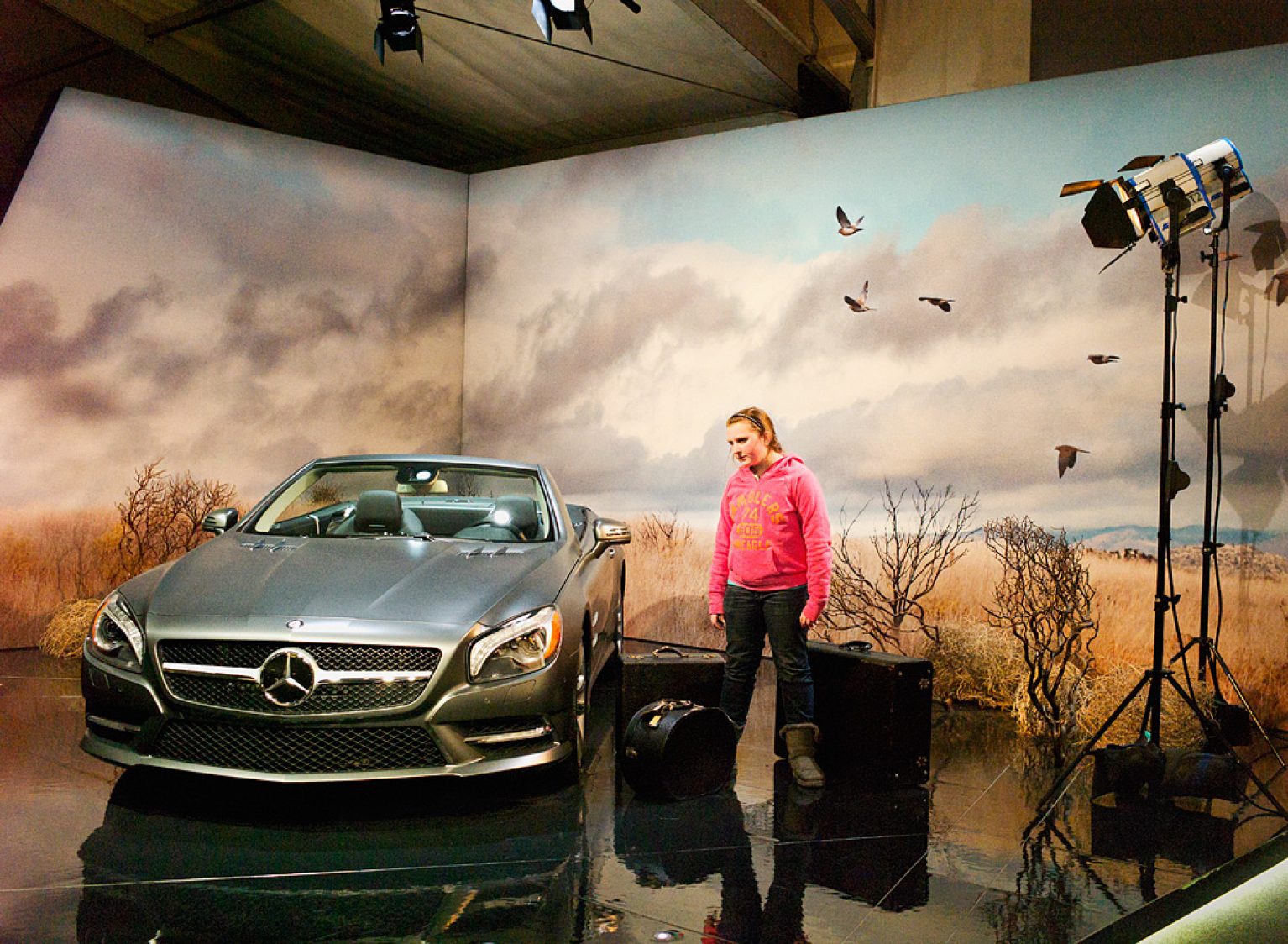
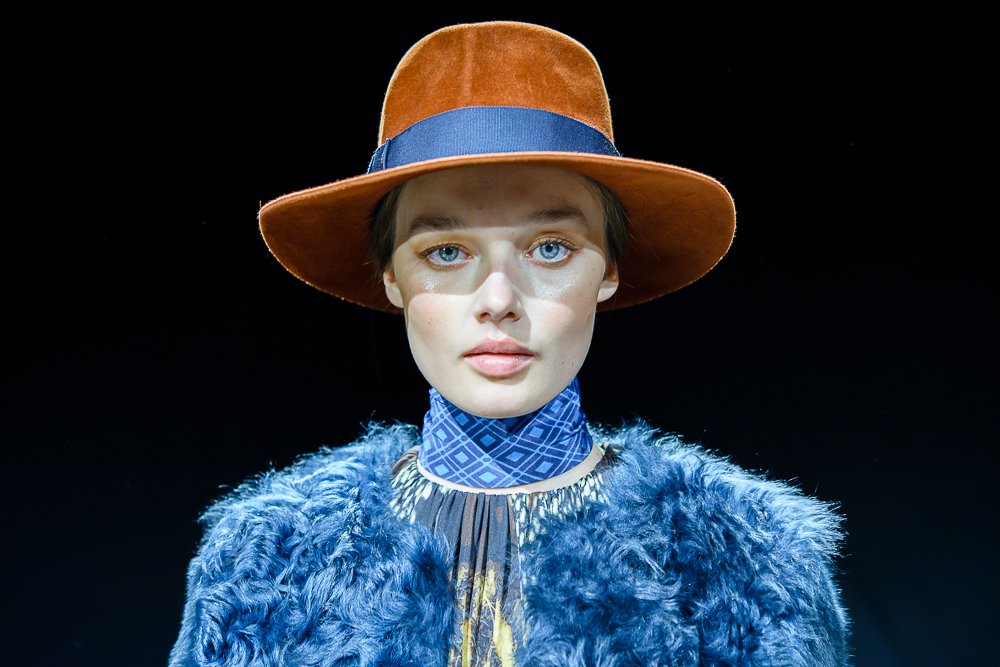
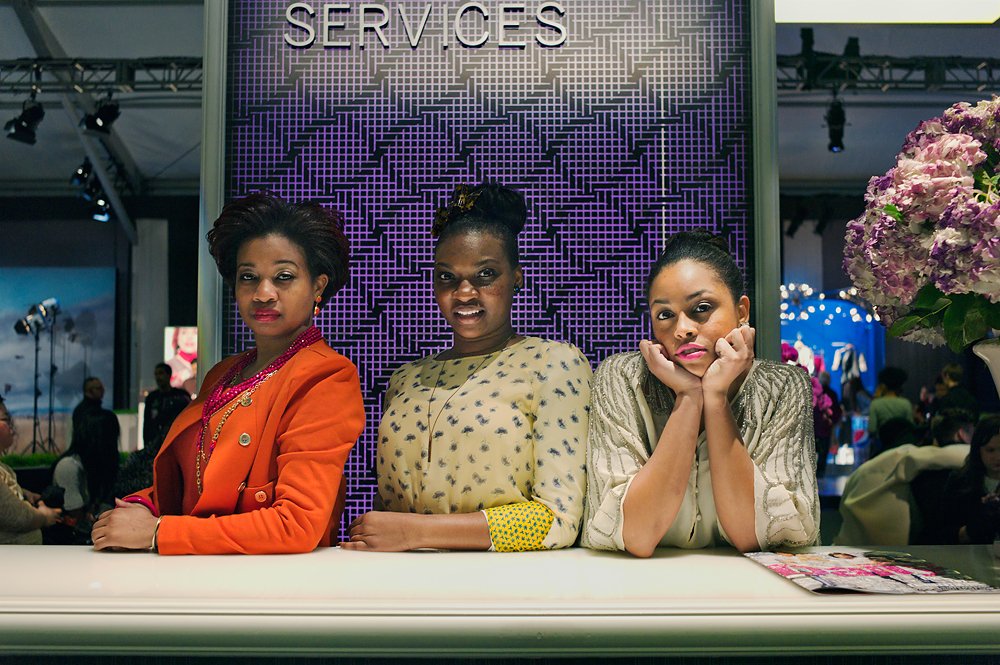
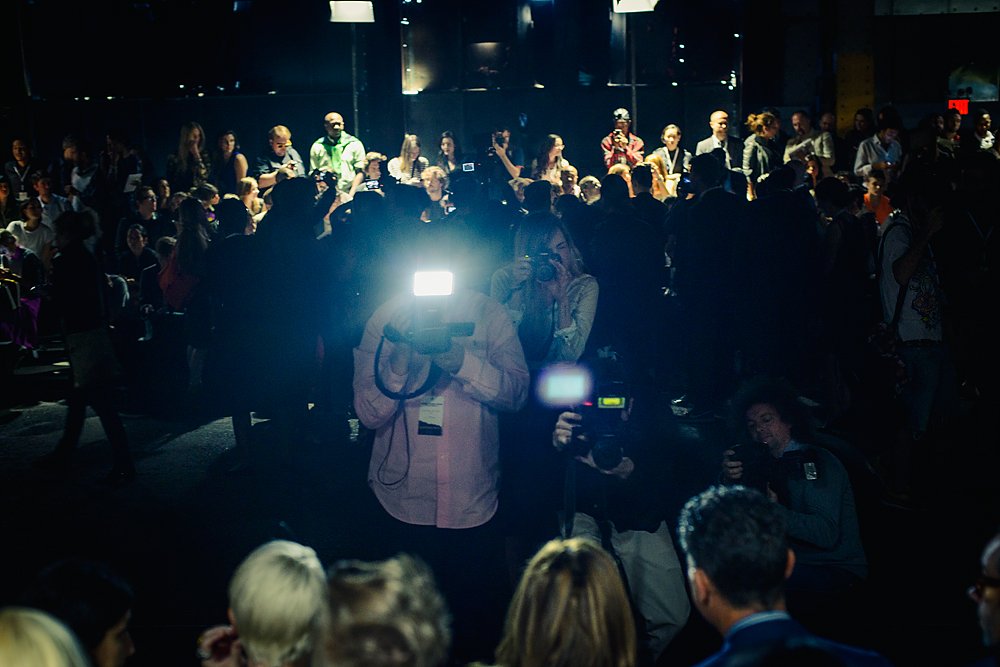
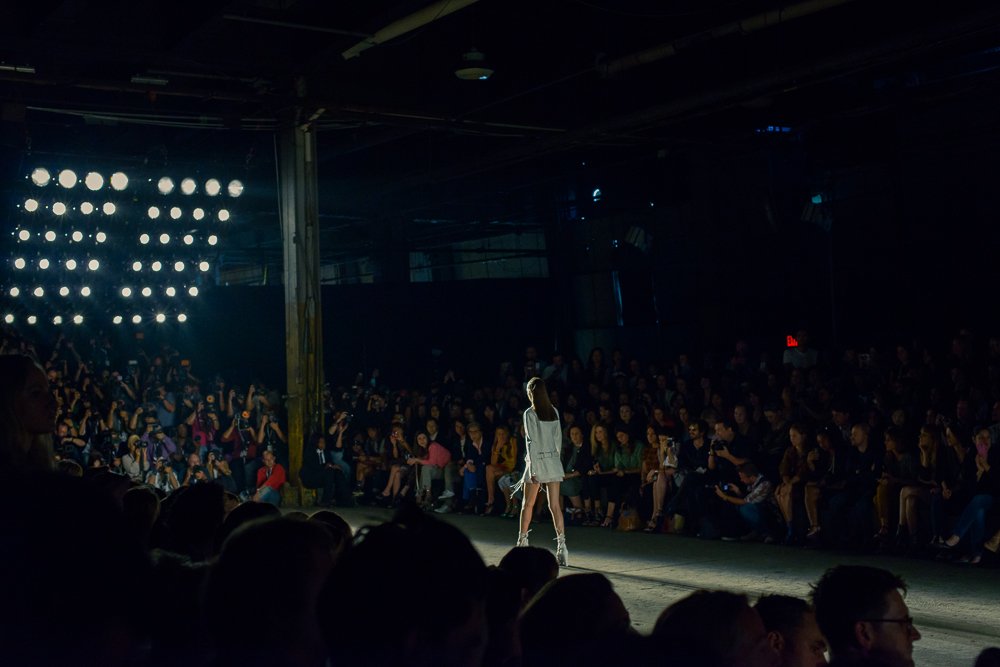
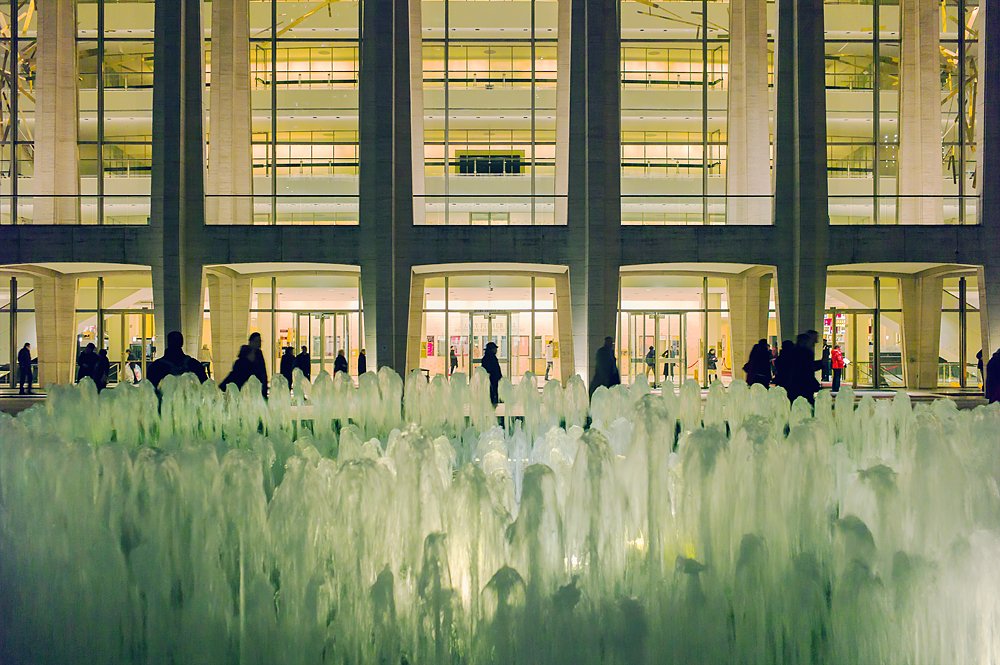
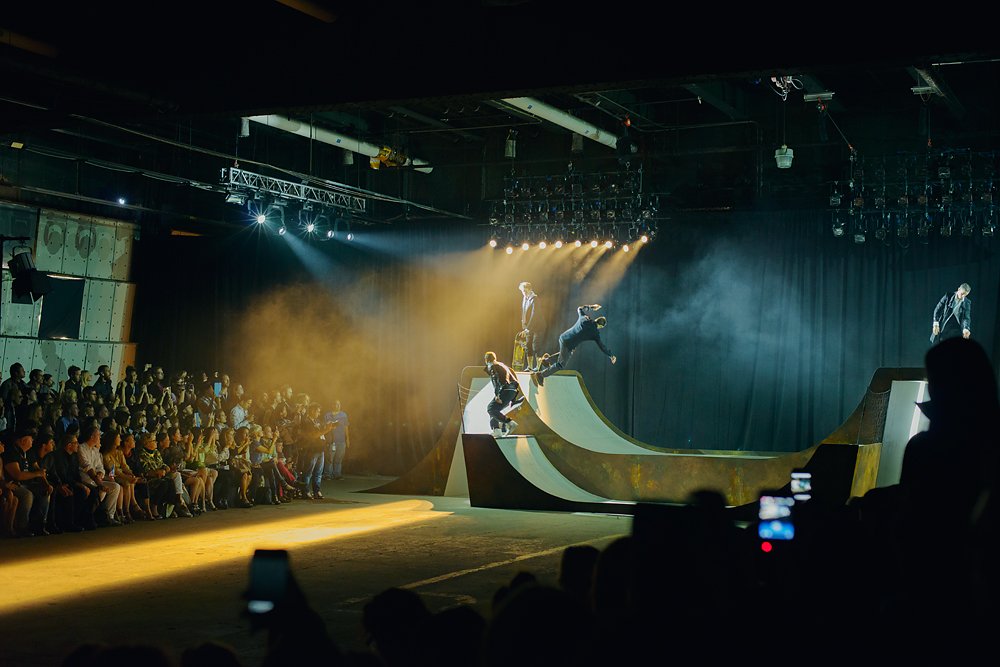
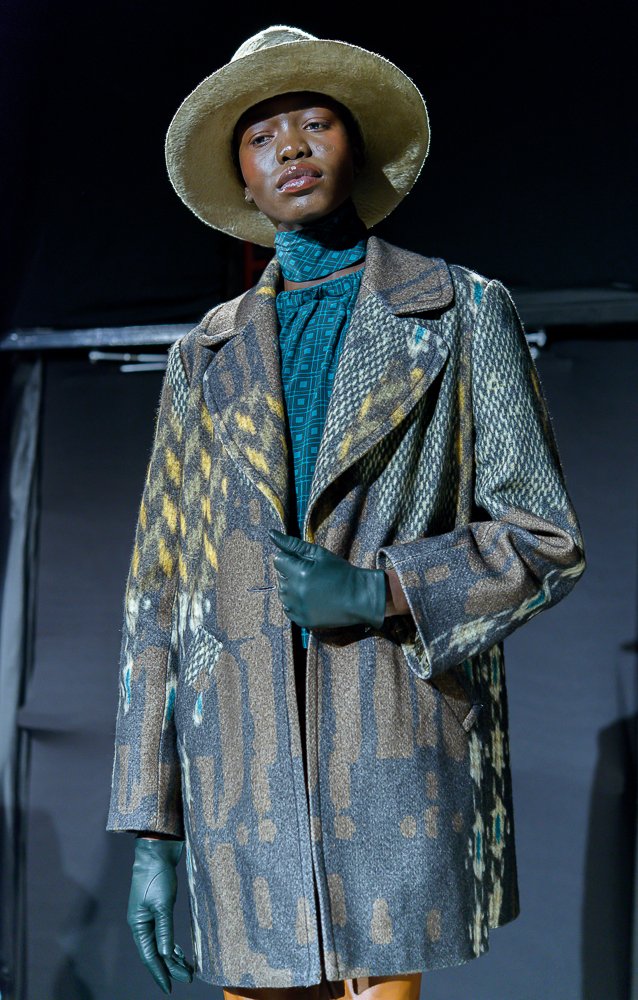
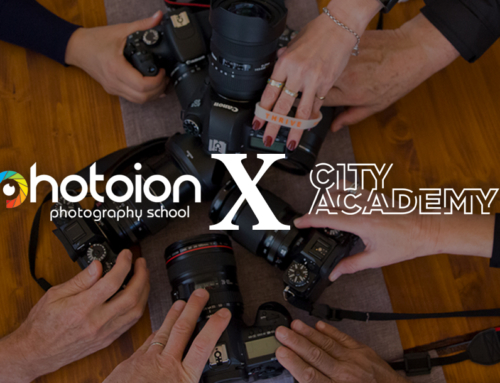
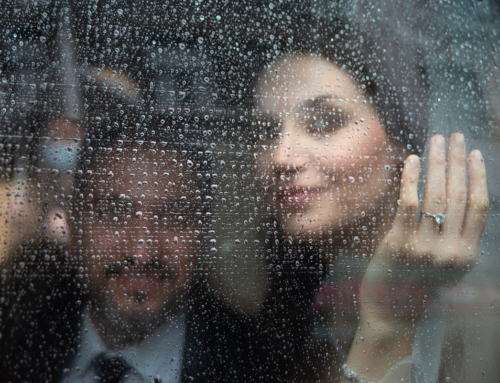
[…] Amazing tutorial: how to photograph a Fashion week from Giulia Bianchi Read more […]
[…] Amazing tutorial: how to photograph a Fashion week from Giulia Bianchi Read more […]